In the past decade, passive design and Passivhaus principles have notably transformed Australian architecture, marking one of the most significant shifts in the industry.

October 8th, 2024
Originating in Germany, the Passivhaus movement has introduced a groundbreaking approach to creating energy-efficient, comfortable, and sustainable buildings.
In Australia, the adoption of Passivhaus principles signifies a major change from traditional building methods, driven by increasing awareness of climate change, rising energy costs, and a commitment to sustainable living.
Contemporary Australian architects are embracing passive design strategies, such as optimising building orientation for natural light and ventilation, selecting appropriate materials, and utilising thermal mass to maintain indoor temperatures.
These strategies not only decrease energy consumption but also enhance occupant comfort and well-being.
By decreasing dependence on mechanical systems, Passivhaus principles help lower greenhouse gas emissions and reduce carbon footprints. These designs can lead to substantial cost savings for homeowners through lower energy bills.
But there are many ways to optimise sustainability and keep construction costs to a minimum while still meeting Passivhaus standards.
Is Passivhaus suitable for the whole of Australia or only some parts of the climatically diverse Continent? Is it time for an Australian Passivhaus standard?
To discuss this, on the first panel we’ll have Heather McCabe, Architect + Certified Passive House Designer at DJRD Architects, Andy Marlow, Director at Envirotecture, Matt Kennedy, Director at Arcke, as well as Geoff Marsdon, Executive General Manager at Bondor Metecno.
“Passivhaus is a science-based, real world verified approach to delivering the healthy, comfortable, smoke tight buildings that Australia needs for this century,” says Marlow.
“If operational energy is to be reliably quantified during the design process then air tight, appropriately ventilated buildings are the way to achieve that; “she’ll be right” no longer cuts it.
“The Passivhaus standard has delivered predictable results for over three decades. At a point in time where we need results not talk, we are faced with a choice; to reinvent the wheel or to roll with the tried and tested. We don’t have the time to waste.”
McCabe is adamant: Passivhaus is a sine-qua-non principle of sustainable living.
“When considering how to create spaces that are equitable, healthy and liveable for all, the application of Passivhaus principles just make sense,” she says.
This panel represents some of the most accomplished leaders in the sustainability field who will explain the current climate of the aged care design industry and plant the seeds to help the next generation achieve a much more diverse and sustainable future.
The 2024 Sustainability Summit will be held in Sydney on November 14. To reserve your place at the 2024 Sustainability Summit for this and other sessions, click here.
INDESIGN is on instagram
Follow @indesignlive
A searchable and comprehensive guide for specifying leading products and their suppliers
Keep up to date with the latest and greatest from our industry BFF's!
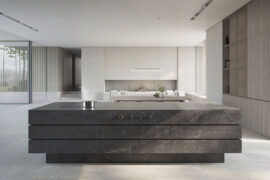
For those who appreciate form as much as function, Gaggenau’s latest induction innovation delivers sculpted precision and effortless flexibility, disappearing seamlessly into the surface when not in use.
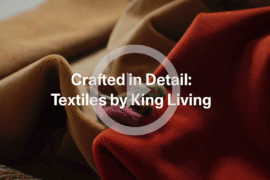
For a closer look behind the creative process, watch this video interview with Sebastian Nash, where he explores the making of King Living’s textile range – from fibre choices to design intent.

The undeniable thread connecting Herman Miller and Knoll’s design legacies across the decades now finds its profound physical embodiment at MillerKnoll’s new Design Yard Archives.

London-based design duo Raw Edges have joined forces with Established & Sons and Tongue & Groove to introduce Wall to Wall – a hand-stained, “living collection” that transforms parquet flooring into a canvas of colour, pattern, and possibility.
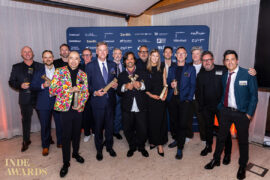
With the opening of the 2026 INDE.Awards program, now is the time to assess your projects, ensure photography is at hand and begin your submissions.
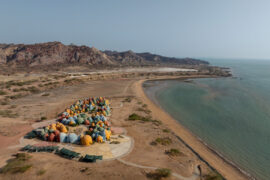
Director Farrokh Derakhshani joins STORIESINDESIGN podcast from Geneva to talk about the wide-ranging Aga Khan Award, which in 2025 awarded $1m to a series of winners with projects from China to Palestine.
The internet never sleeps! Here's the stuff you might have missed
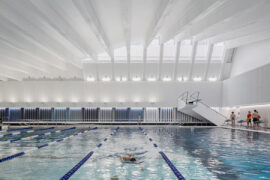
Hiwa, the University of Auckland’s six-storey recreation centre by Warren and Mahoney with MJMA Toronto and Haumi, has taken out Sport Architecture at the 2025 World Architecture Festival. A vertical village for wellbeing and connection, the project continues its run of global accolades as a new benchmark for campus life and student experience.
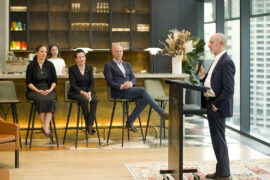
The eponymous practice founder reflects on four decades of work in a new book launched by Lord Mayor Clover Moore, tracing lessons from New York to Sydney and revisiting seminal works including 8 Chifley Square and the Andrew “Boy” Charlton Pool.
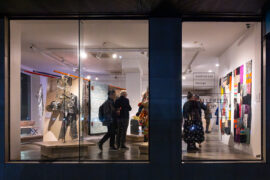
The Australian Design Centre (ADC) has announced that the organisation can no longer continue without adequate government funding to cover operational costs.

The Fisher and Paykel Melbourne Experience Centre by Clare Cousins Architects with Fisher and Paykel Design and Alt Group has been awarded The Retail Space at the INDE.Awards 2025. As a winning project, it redefines the possibilities of retail architecture by creating an immersive, material rich environment shaped by place, culture and craft.